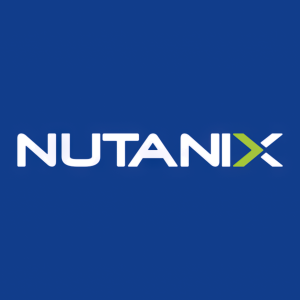Study Shows Healthcare Industry is in Early Stages of Multicloud Adoption, but Deployments are Rising
Nutanix (NASDAQ: NTNX) revealed insights from its Enterprise Cloud Index survey, indicating the healthcare sector is lagging in cloud adoption, with only 27% currently engaging. However, this figure is expected to surge to 51% over the next three years. Key challenges include data integration (49%) and cost management (48%). Respondents cited the need for a hybrid multicloud model for addressing operational complexities. The report emphasizes the importance of improving business continuity and disaster recovery, with IT spending increasing due to pandemic-related demands.
- Expected increase in cloud adoption from 27% to 51% in healthcare organizations over three years.
- High interest in hybrid multicloud models among respondents (90%).
- Focus on improving business continuity and disaster recovery (38% intent to increase multicloud use).
- Planned IT spending increases in security (62%) and AI-based technologies (60%) linked to pandemic demand.
- Current healthcare cloud adoption remains low compared to other sectors.
- 92% of healthcare organizations struggle with managing multicloud infrastructures.
- 84% lack necessary IT skills to meet business cloud demands.
Insights
Analyzing...
Research Reveals Hybrid Multicloud is the Ideal IT model, but Healthcare is Slower to Adopt
Multicloud is the dominant IT architecture in use worldwide, however, among healthcare ECI respondents,
“Multicloud is here to stay, but complexity and challenges remain as regulations drive many of healthcare organizations’ IT deployment decisions,” said
Healthcare survey respondents were asked about their current cloud challenges, how they’re running business applications now, and where they plan to run them in the future. Respondents were also asked about the impact of the pandemic on recent, current, and future IT infrastructure decisions and how IT strategy and priorities may change because of it. Key findings from this year’s report include:
-
Top multicloud challenges include integrating data across clouds (
49% ), managing costs (48% ), and performance challenges with network overlays (45% ). While multicloud adoption is trending upwards, most healthcare organizations are struggling with the reality of operating across multiple clouds, private and public. Given that more than84% say they currently lack the IT skills required to meet business demands, simplifying operations is likely to be a key focus for many in the year ahead. However, IT leaders are realizing that there is no one-size-fits-all approach to the cloud, making hybrid multicloud ideal according to the majority of respondents. -
Application mobility is top of mind. All healthcare organizations (
100% ) have moved one or more applications to a new IT environment over the last 12 months, likely moving applications out of legacy three-tier environments and into private clouds given healthcare’s above-average private cloud and traditional datacenter penetration. Yet,80% of respondents agree that moving a workload to a new cloud environment can be costly and time-consuming. They cite security (48% ) most often as the reason for the move, outpacing the global average (41% ), followed by gaining control of the application (38% ), and improving performance (36% ). -
Focus on business continuity and disaster recovery is helping to drive cloud adoption. Due to being a highly regulated industry, healthcare organizations have been slower to embrace the public cloud as a main component of their IT environments for security reasons. However, healthcare IT professionals indicated an intent to use public cloud services as supplemental IT infrastructure to which they can fail over for improved business continuity levels and disaster recovery setups (BC/DR). In fact, they cited improving BC/DR most often as motivating their three-year plans to increase multicloud use (
38% ). Healthcare’s interest in boosting BC/DR could prove to be the impetus for greater public cloud acceptance, as this use case has a strong public cloud component, which could accelerate the industry's general multicloud usage. -
Top healthcare IT priorities for the next 12 to 18 months include adopting 5G (
47% ) and AI/ML-based services (46% ), and improving BC/DR (45% ), and multicloud management (44% ). Healthcare respondents also said that the COVID-19 pandemic has spurred them to increase their IT spending in certain areas such as bolstering security posture (62% ), implementing AI-based self-service technology (60% ), and upgrading existing IT infrastructure (48% ).
For the fourth consecutive year,
To learn more about the report and findings, please download the full fourth Nutanix Enterprise Cloud Index here.
About
© 2022
This release may contain express and implied forward-looking statements, which are not historical facts and are instead based on our current expectations, estimates and beliefs. The accuracy of such statements involves risks and uncertainties and depends upon future events, including those that may be beyond our control, and actual results may differ materially and adversely from those anticipated or implied by such statements. Any forward-looking statements included herein speak only as of the date hereof and, except as required by law, we assume no obligation to update or otherwise revise any of such forward-looking statements to reflect subsequent events or circumstances.
View source version on businesswire.com: https://www.businesswire.com/news/home/20220314005012/en/
Media Contact:
pr@nutanix.com
Source:







